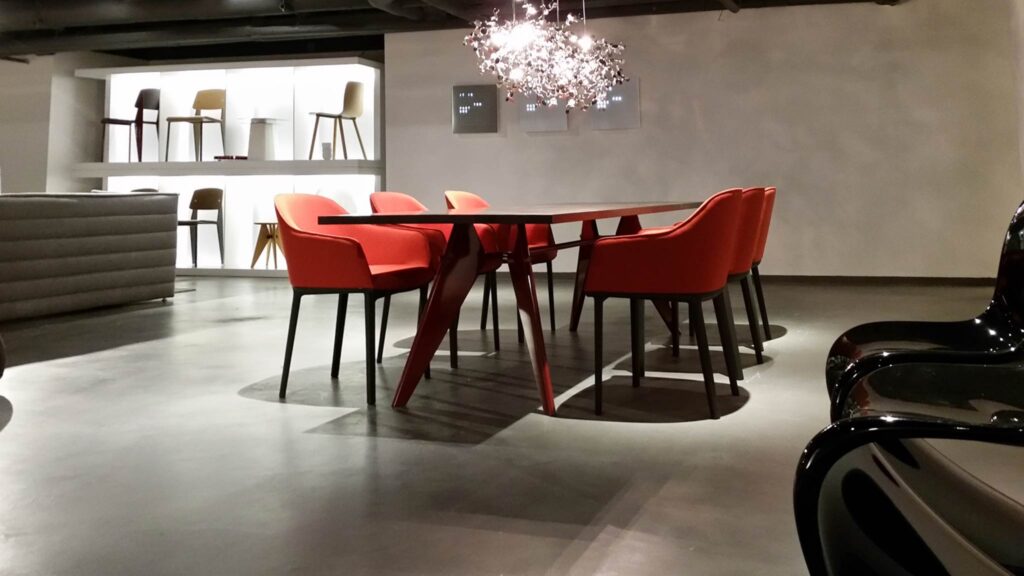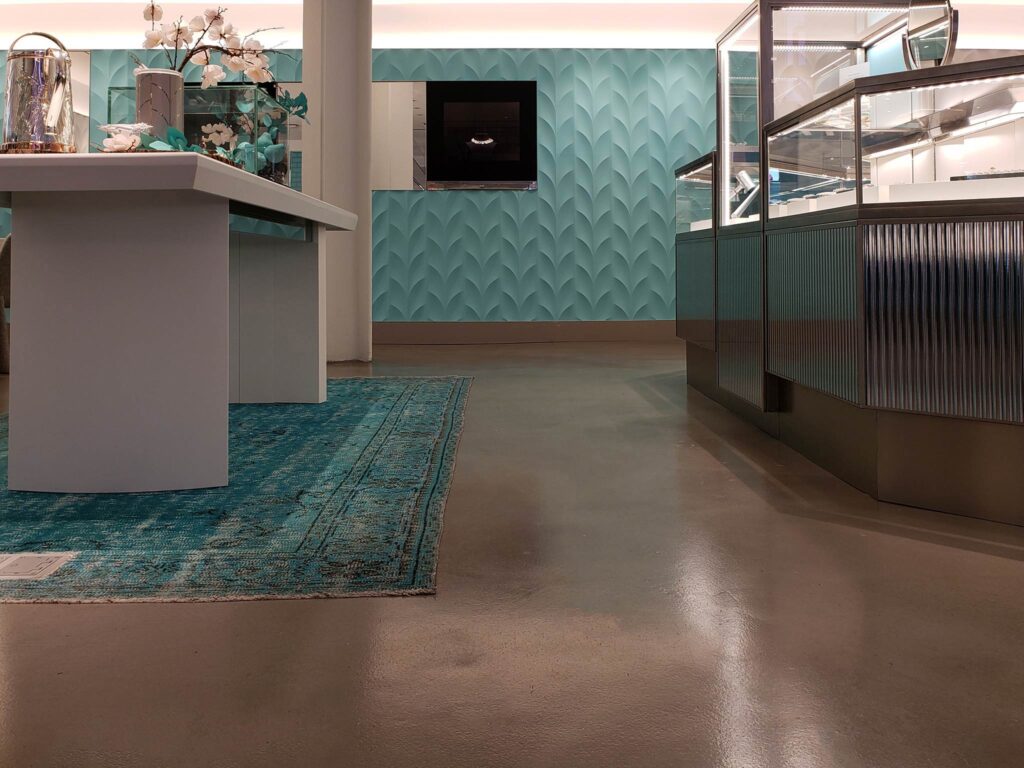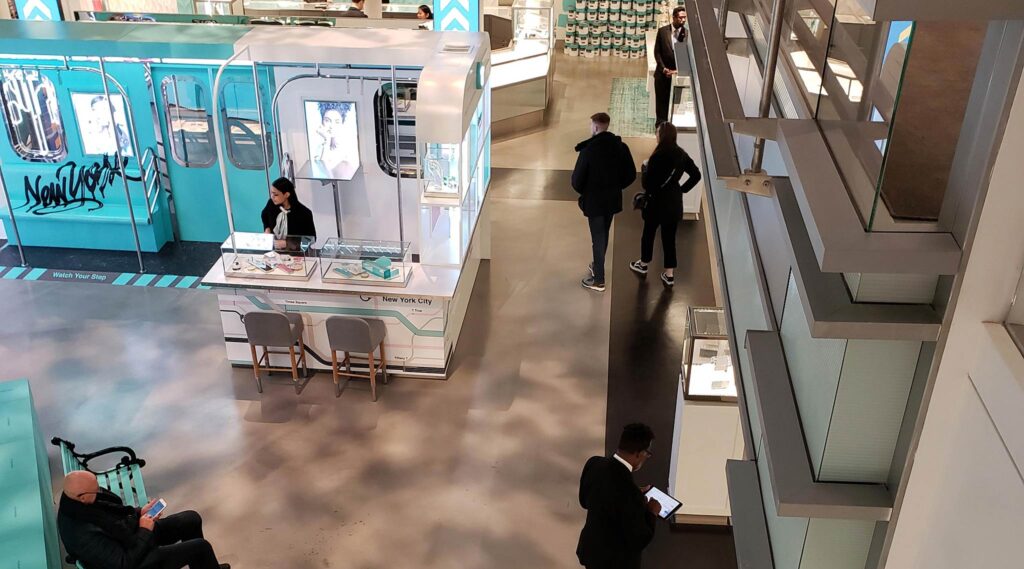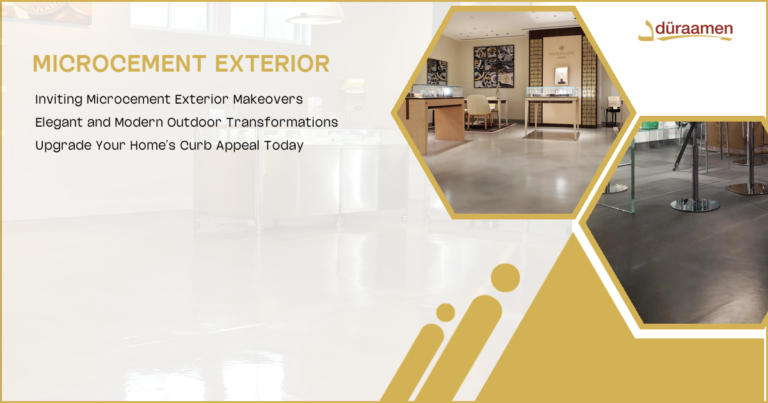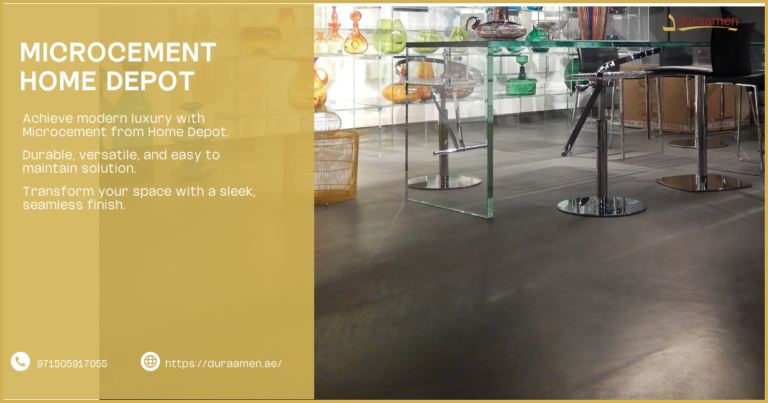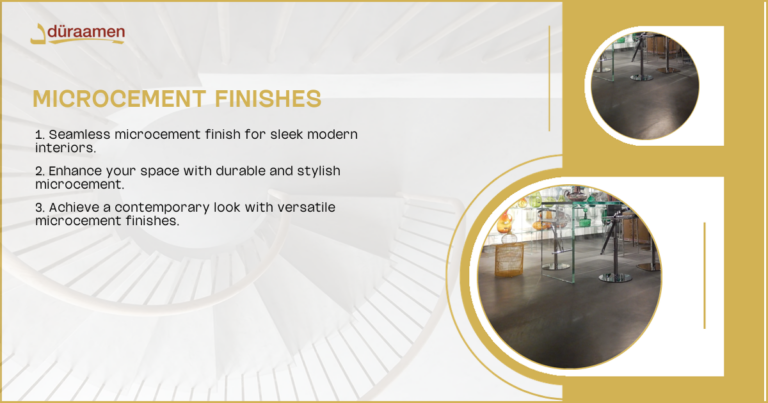Thinking of updating your existing tile flooring? Consider choosing a sprayable microcement over tiles. Sprayable microcement over tile flooring offers a seamless, contemporary, and durable flooring solution that is cost-effective and resembles the look of polished concrete. Microcements can be applied to many types of substrates, including concrete, plywood, tile, certain metals, and more. Highly customizable, sprayable microcement over tiles flooring can be colored, stained, or dyed. Various sheens from dead matte to gloss are available as well.
What is Sprayable Microcement Flooring?




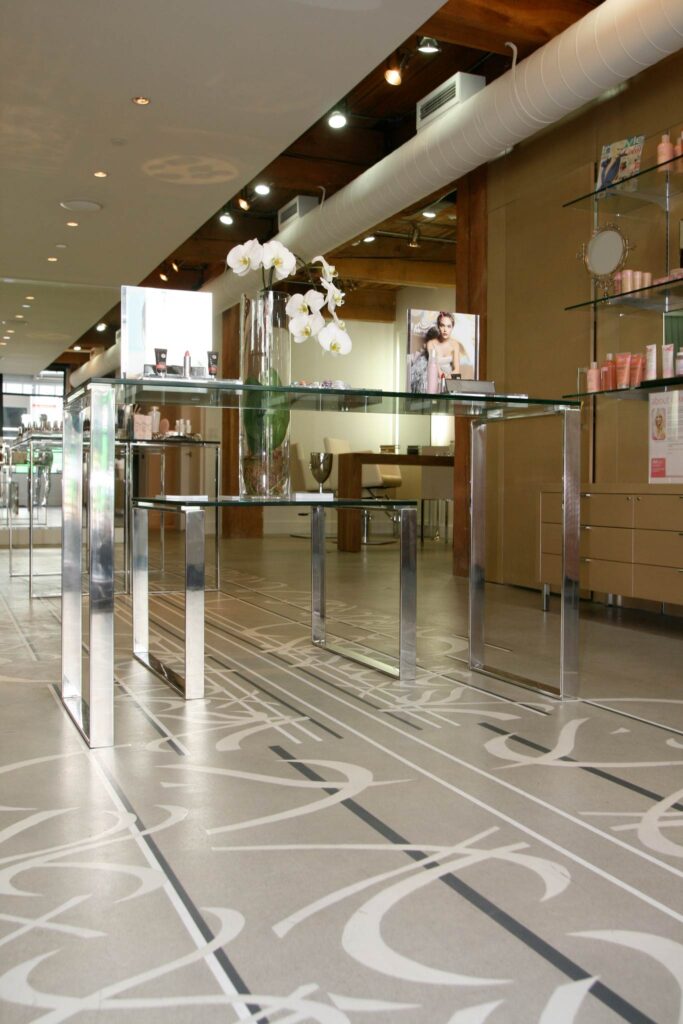
Microcements are widely used to refinish old and worn surfaces and create the look of modern polished concrete. They can be applied over concrete, wood, tile, and other concrete coatings.
Arapido is Duraamen’s on-of-a-kind sprayable microcement. It was developed in conjunction with the Terrazzi Sprayer and both are part of the Terrazzi Sprayable Polished Concrete Floor System. Arapido itself is a professional, high-end, microcement used by contractors for many well-known brand retail spaces and office projects. It also provides a very modern appeal to residential spaces including high rise condos and single-family homes.
Versatility in design and customization are built-in traits of Arapido. It can be integrally colored, stained, dyed, or tinted with sealers to create unique colorful effects. Additionally, decorative techniques such as stenciling can be used to create unique designs.
Ease of application, durability, and versatility make Arapido a top choice among contractors, and designers.
How Can I Tell if My Tile Floor Can Accept a Concrete Microcement?
Determining if your tile floor is suitable for sprayable microcement over tiles installation involves determining many factors.
Tile Material and Texture
Concrete microcements are generally compatible with ceramic, porcelain, and natural stone tiles assuming another form of cementitious coating is applied first. Glazed or polished tiles may require additional surface preparation to promote adhesion.
Smooth, non-porous tiles may require surface profiling or etching to create a suitable substrate for the microcement via a cementitious overlay to adhere to. Textured or rough tiles provide better mechanical adhesion for any type of microcement, microtopping, or concrete overlay.
Tile and Grout Condition
Inspect the condition of the existing tile floor. Ensure that the tiles are firmly adhered to the substrate without any loose or cracked tiles.
If there are significant cracks, chips, or other damage to the tiles, it may affect the performance and appearance of the sprayable microcement over tiles overlay.
Evaluate the condition of the grout joints. If the tile grout is cracked, crumbling, or uneven, it may need to be repaired or replaced before applying a microcement floor. Properly prepared grout joints help to ensure a smooth and even surface for the microcement.
Levelness
Uneven surfaces may require leveling or patching to create a flat substrate for the sprayable microcement over tiles floor. Low spots should be filled with a self-leveling overlay, while high spots may need to be ground down.
Moisture Issues
Excessive moisture will affect the adhesion and performance of microcement and concrete overlays in general. A professional should perform a moisture test, such as a calcium chloride test or a relative humidity test, to determine if moisture mitigation measures are needed.
Microcement Flooring’s Longevity and Upkeep is great because it lasts a long time and is easy to clean. It’s like having a super strong floor that doesn’t need much work to keep it looking good. Choosing Perfect Microcement Flooring Hue and Texture means picking the right color and feel of your floor to match your room. It’s like choosing the best outfit that fits you and your style.
Microcement Perks for High-Use Zones include its strong durability and easy maintenance, making it perfect for areas with lots of traffic. It’s also resistant to scratches and stains, keeping it looking new for longer. Comparing Microcement and Traditional Flooring: Pros and Cons , microcement is durable and customizable but can be slippery, while traditional flooring like wood or tile is classic and safe but can scratch or chip.
Microcement Material Components are the special ingredients used to make microcement, a type of strong and smooth concrete used in construction. These components are mixed together to create a durable and versatile material. Microcement wall textures make walls look smooth and modern they are easy to clean and can be used in any room
Microcement bathroom pricing and Microcement microtopping assessment checks how well thin layers of special cement work on floors and walls It looks at things like strength durability and appearance to make sure the microcement is good quality Microcement quality pricing depends on the materials used and the skill of the installers Higher quality microcement often costs more but lasts longer and looks better
Premium microcement selections offer top-quality options for smooth and durable surfaces in homes and buildings These high-end choices provide a sleek modern look that is both stylish and long-lasting
Benefits of Arapido Sprayable Microcement over Tiles Flooring
Top of FormSmooth and Seamless
The spray application method creates a smooth, seamless surface without visible joints or grout lines, giving the floor a sleek and modern look.
Uniform Finish
Arapido sprayable microcement ensures consistent coverage and thickness across the entire floor, resulting in a uniform appearance with no variations or irregularities.
Customizable
Like traditional microcements, Arapido sprayable microcement over tiles floors are available in a wide range of colors, and finishes, allowing for customization to suit different design preferences and interior styles.
Contemporary Aesthetic
The minimalist and streamlined appearance of Arapido sprayable microcement floors complements modern and industrial-inspired interiors, adding a touch of sophistication and elegance to any space.

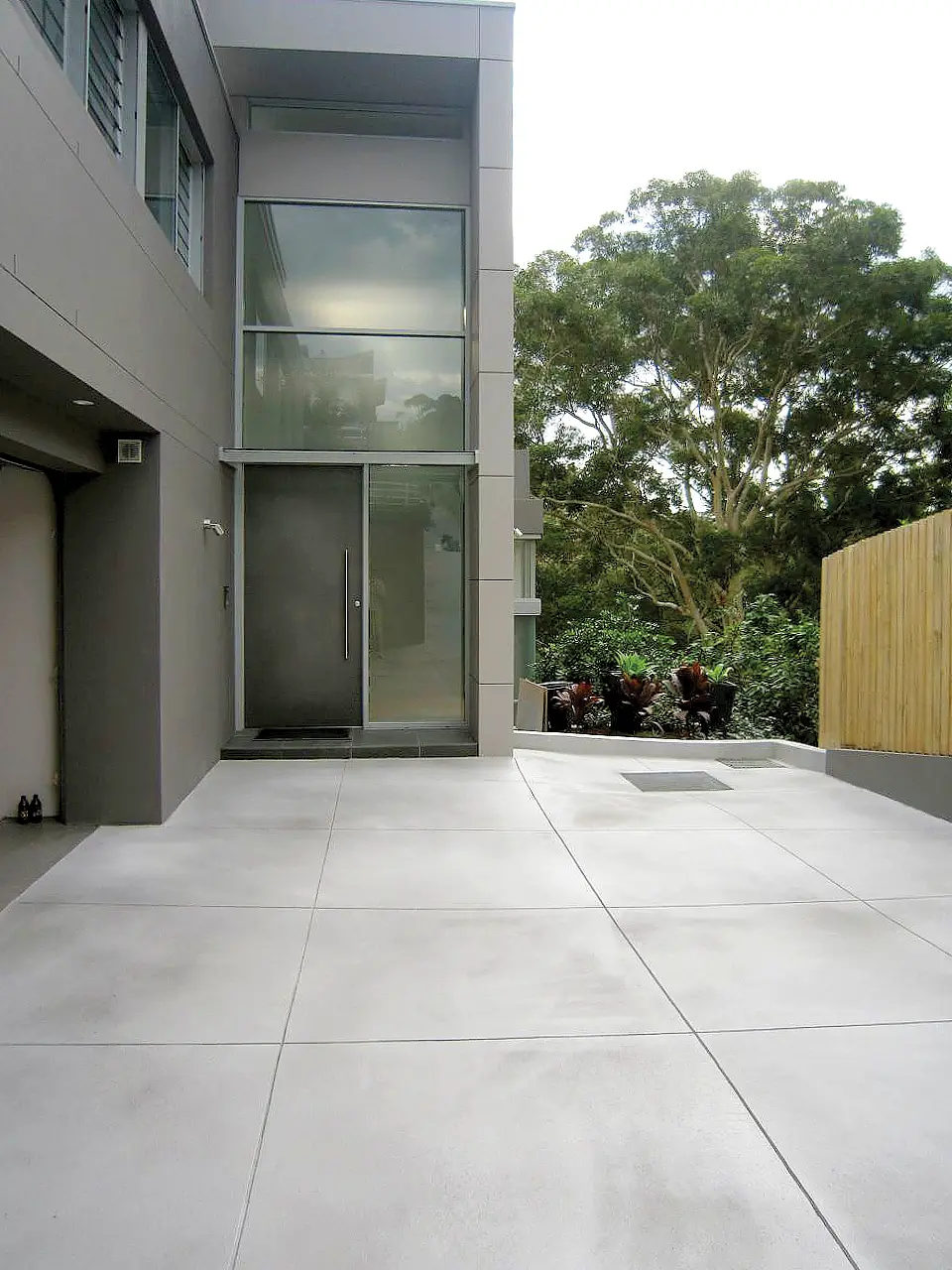
Versatility
Arapido sprayable microcement can be applied to various substrates, including concrete, tiles, wood, and even existing microcement surfaces, making it a versatile flooring option for both new construction and renovation projects.
Durability
When properly installed and sealed, Arapido sprayable microcement over tiles floors are highly durable and resistant to wear, scratches, stains, and moisture, making them suitable for high-traffic areas such as living rooms, kitchens, and commercial spaces.
Easy Maintenance
Arapido sprayable microcement floors require minimal maintenance, as they can be cleaned with a neutral pH cleaner and water. Periodic resealing may be necessary to maintain their protective finish and longevity.
Quick Installation
The spray application method allows for faster and more efficient installation compared to traditional microcement application techniques, reducing installation time and minimizing disruption to the project timeline.
Installation of an Arapido Sprayable Microcement over Tiles Flooring.
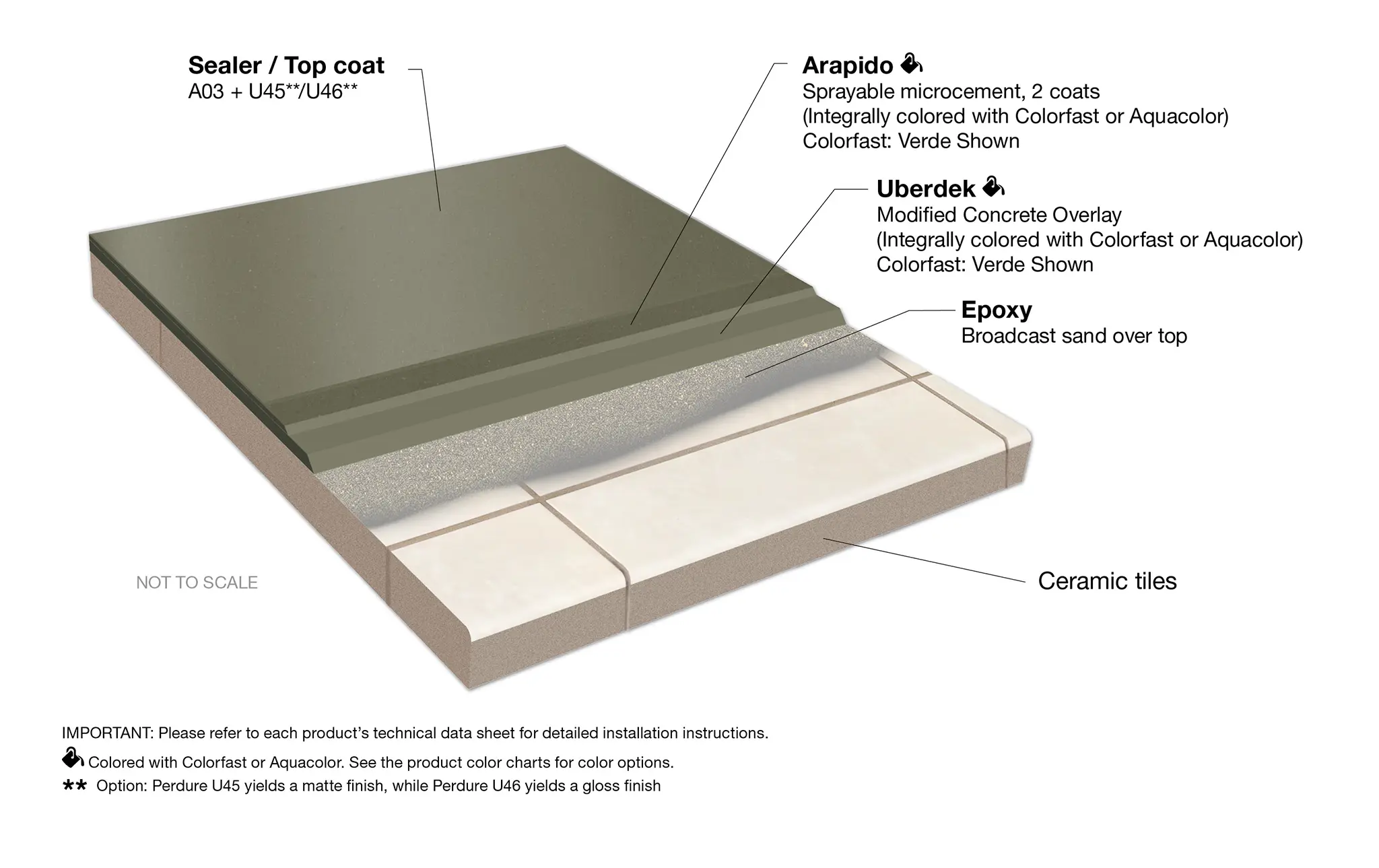
Surface Preparation
Thoroughly clean the tile surface to remove any dirt, grease, wax, or other contaminants. Use a suitable cleaner and rinse the surface thoroughly.
Repair any damaged or loose tiles. Ensure that the tile surface is level and free of cracks or major imperfections.
If necessary, grind the tiles’ surface to remove any glaze or shine.
Priming
Apply Perdure E02 primer to the prepared tile surface and broadcast with sand. The primer and sand help to improve adhesion between the tile and the overlay.
Mixing the Sprayable Microcement and Concrete Overlay
Prepare the Duraamen’s Uberdek concrete resurfacer (overlay) according to the instructions. This involves mixing the dry powder with CP1000 acrylic primer and water. Use a drill mixer for thorough blending.
Prepare Arapido following the instructions and mix with water. Make sure the Terrazzi Sprayer is functioning properly and that the Arapido microcement mixture has the correct viscosity for spraying.
Application
Pour the mixed Uberdek onto the primed tile substrate and spread with a squeegee, or flat trowel using enough pressure to ensure good contact with the entire surface. Apply one coat of Uberdek making sure the surface is level and the correct thickness. Let the Uberdek overlay cure.
After the Uberdek concrete overlay has cured, spray the Arapido sprayable microcement in a thin, even coat over the surface. Apply two coats of Arapido.
Allow the Arapido microcement to cure fully before proceeding with sealing or further finishing. Curing times may vary depending on environmental conditions.
Sealing and Finishing
Once the Arapido microcement is fully cured, apply Perdure A03 acrylic sealer . Then apply Perdure U45 urethane matte sealer or Perdure U46 , urethane gloss sealer to protect the surface and enhance its appearance. Choose the sealer that provides the desired level of sheen.
Optionally, you can add decorative effects or finishes to the sealed microcement surface, such as staining, to achieve the desired aesthetic.
Where to Buy Sprayable Microcement Over Tiles Flooring Supplies
Everything you need to install a microcement over tile can be purchased through Duraamen.ae or from our warehouse in Dubai. Duraamen also has warehouses in Cranbury, New Jersey, Dallas, Texas, Hayward, California, and Dubai, UAE.
It’s important to note that the benefits of Arapido microcement may vary based on application techniques, and the overall project requirements. Additionally, consulting with a Duraamen professional and following manufacturer guidelines is crucial for a successful installation that maximizes the benefits of installing Arapido over tiles.
Contact us or Speak with a Duraamen representative about your project: +971 7 2081625 .
Duraamen International FZ-LLC
Shed 15, Warehouse 11-12
Al Hamra Industrial Zone
PO Box No: 1044
Ras Al Khaimah, UAE
